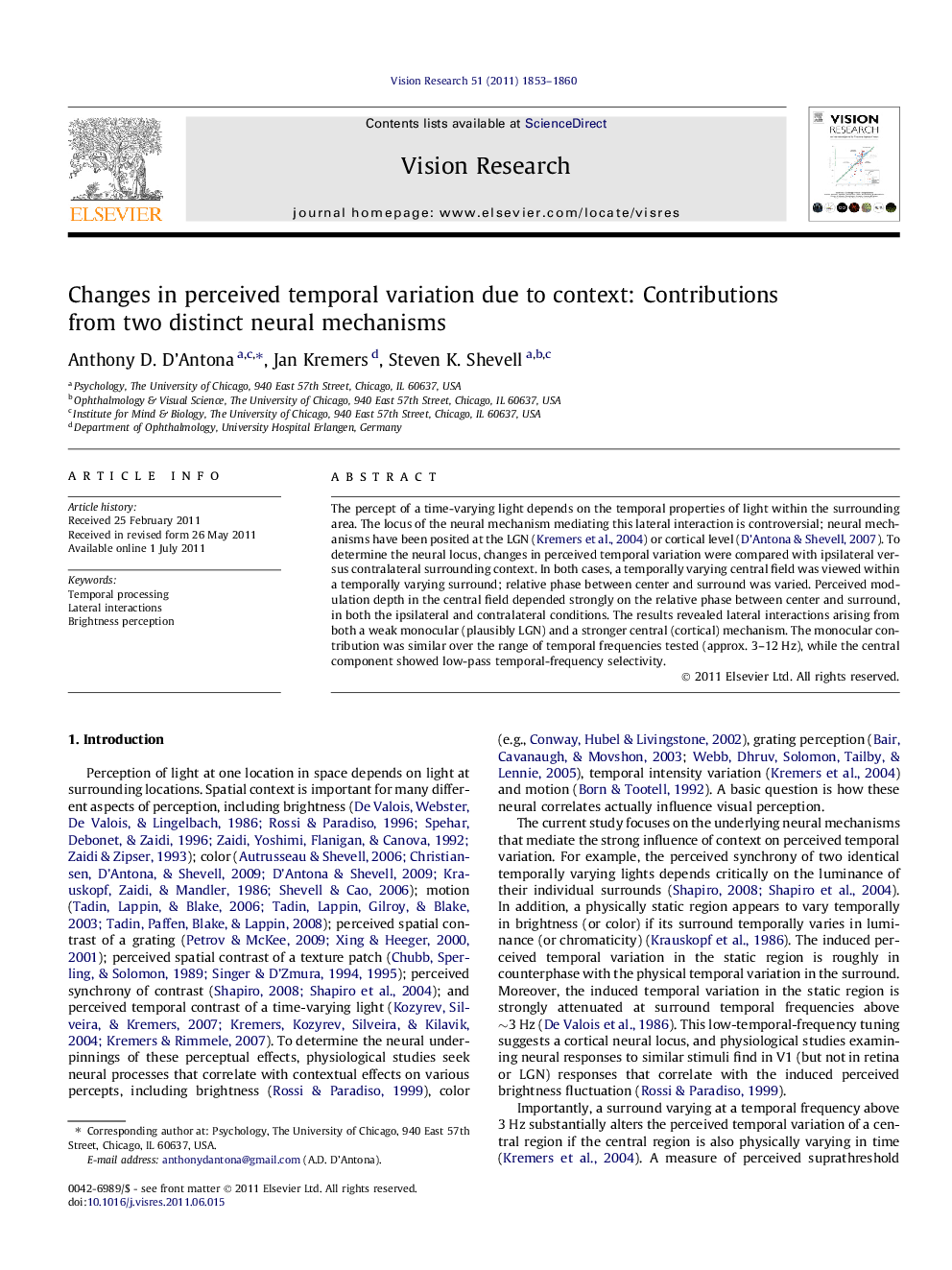| Article ID | Journal | Published Year | Pages | File Type |
|---|---|---|---|---|
| 4034102 | Vision Research | 2011 | 8 Pages |
The percept of a time-varying light depends on the temporal properties of light within the surrounding area. The locus of the neural mechanism mediating this lateral interaction is controversial; neural mechanisms have been posited at the LGN (Kremers et al., 2004) or cortical level (D’Antona & Shevell, 2007). To determine the neural locus, changes in perceived temporal variation were compared with ipsilateral versus contralateral surrounding context. In both cases, a temporally varying central field was viewed within a temporally varying surround; relative phase between center and surround was varied. Perceived modulation depth in the central field depended strongly on the relative phase between center and surround, in both the ipsilateral and contralateral conditions. The results revealed lateral interactions arising from both a weak monocular (plausibly LGN) and a stronger central (cortical) mechanism. The monocular contribution was similar over the range of temporal frequencies tested (approx. 3–12 Hz), while the central component showed low-pass temporal-frequency selectivity.
► Perceived temporal variation depends strongly on context. ► This contextual influence results from neural mechanisms at both a monocular and binocular level of visual processing. ► These separate neural mechanisms have distinct strengths and temporal frequency tuning.
